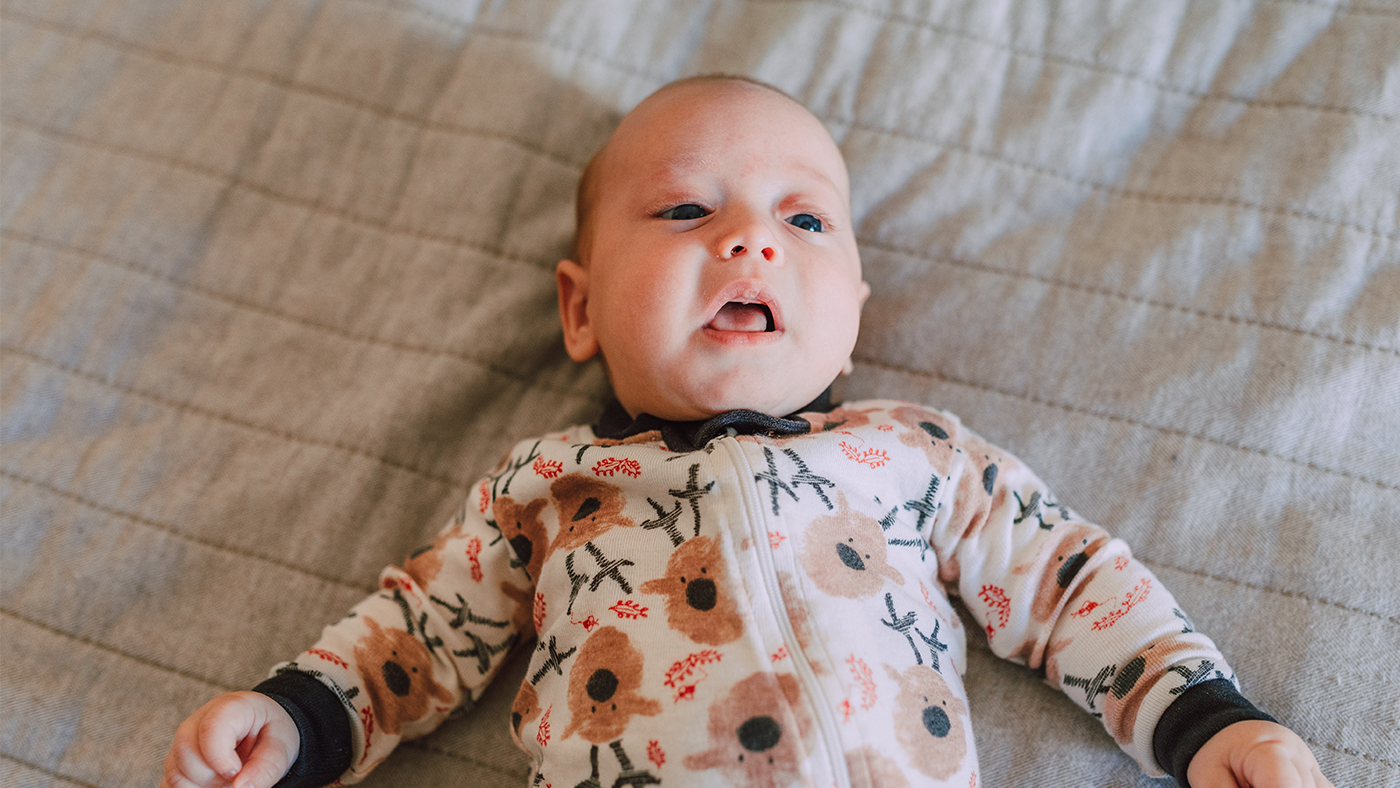How you and your baby are already conversing with sounds

Your baby has been listening to you speak since before they were born and has been moving their mouth and developing control of their movements and their breathing for a little while now. They continue to communicate by crying, but as they watch you and listen to you speak they will begin to engage in turn-taking with sounds that sound more like speech.
The natural conversations you and your baby have with each other (probably without realising!)
Your baby will make sounds when they are comfortable and relaxed (these might include some early vowel sounds).[1] It's likely that when talking to your baby you naturally pause if they make sounds that sound like early speech, so that they can take a turn.
Researchers found that parents tended to pause when a baby made speech-like sounds, and talk at the same time when their baby cried.[2]
You probably do this without realising, as both you and your baby are ready to take part in conversations in which you each take a turn. You might notice that as your baby can make more sounds they will start to do this in response to you talking to them.
All of your responses teach them about interaction
Your baby will learn language through conversation as well as from watching, listening and practising making sounds.[3] When you respond to the sounds that they make, or other ways in which they seek to interact with you, such as smiling or moving, you are teaching them about conversation and interaction. They will understand that a conversation involves another person and that people take turns speaking.
Chatting to your baby as you do things and spending time talking directly to them in a position where they can see your face will help them to develop their understanding of language and of conversation.
Your baby’s social, cognitive and language development are closely linked; your baby will learn language through their interactions with other people. They will begin to understand the world not only through their movement and senses but also through the way it is described in words.
From gurgles to babbles – your baby's picking up the pattern of speech around them
Soon your baby will start to make more sounds; they will babble and then begin to combine different sounds into speech that has the pattern and rhythm of the language that they hear around them. They will continue to explore conversations and will enjoy it when you and other people speak to them.
References:
[1] Sheridan, M., Sharma, A and Cockerill, H. (2014). Mary Sheridan’s from birth to five years. Children’s developmental progress. (4th edn.). Abingdon: Routledge.
[2]. Yoo, H., Bowman, D. A., & Oller, D. K. (2018). The Origin of Protoconversation: An Examination of Caregiver Responses to Cry and Speech-Like Vocalizations. Frontiers in psychology, 9, 1510. https://doi.org/10.3389/fpsyg.2018.01510
[3] Addyman, C (2020) The laughing baby: The extraordinary science behind what makes babies happy. London: Unbound.